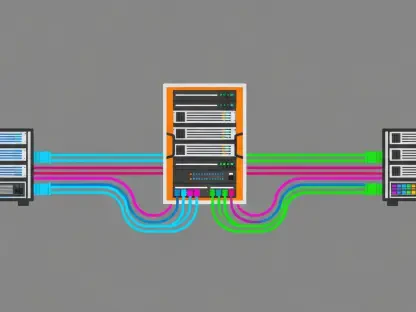In a significant leap for artificial intelligence research, Chinese AI lab Z.ai has introduced two new open-source general language models that promise to set a new standard in the field. Dubbed GLM-4.5 and its variant, GLM-4.5-Air, these models emerge as the lab’s most sophisticated creations, specially designed to handle an extensive range of tasks with exceptional efficiency and proficiency. Z.ai’s latest offerings reflect an ambition to transcend existing boundaries in AI applications, blending versatility with advanced robustness. Their exceptional capability stems from an innovative hybrid reasoning approach, skillfully dividing processes between a ‘thinking mode’ for intricate reasoning and tool usage, and a ‘non-thinking mode’ for faster, more straightforward responses. This dual approach ensures that the models can efficiently tackle complex tasks while also swiftly handling simpler demands. Moreover, GLM-4.5 integrates agentic capabilities, allowing these systems to autonomously execute tasks, thereby broadening their potential applications in real-world scenarios.
Setting New Benchmarks in AI Technology
Z.ai asserts that the GLM-4.5 models deliver a performance that surpasses any other open-source language models across the globe. The design principle of these models aims to bridge the gaps observed in the offerings of major tech giants such as Google, OpenAI, and Anthropic. While those companies often deliver models excelling in specific areas, they sometimes struggle to maintain performance across various functions. GLM-4.5 aspires to rectify these limitations by consolidating diverse capabilities into a single, cohesive model. Key to its superior performance is the deployment of a mixture-of-experts (MoE) architecture. This structure uniquely enhances computational efficiency, focusing intensively on depth by increasing the number of layers. Consequently, the models offer enhanced reasoning skills while ensuring that performance remains high without compromising speed or accuracy. By tackling traditional inefficiencies, these models stand poised to challenge existing paradigms in AI performance and adaptive functionality.
Technical Acumen and Field Testing
At the heart of GLM-4.5’s technical prowess is its impressive makeup, featuring a staggering 355 billion parameters with 32 billion active ones. Its sibling, the GLM-4.5-Air, while slightly less extensive, holds 106 billion parameters with 12 billion active ones. Both models support a robust context window of 128,000 tokens, which vastly enhances their capacity to manage extensive information and complex interactions. Advanced empirical testing of the GLM-4.5 consistently exhibits its capacities across various challenging benchmarks focusing on agentic capabilities, complex reasoning, and coding excellence. The models rank third overall among the top-tier, trailing closely behind OpenAI’s o3 and xAI’s Grok 4, underscoring their competitive proficiency. This rigorous testing regime buttresses Z.ai’s claims of its models’ superior versatility and openness as formidable tools within the global AI community. The availability of these models on platforms like GitHub and Hugging Face, alongside Z.ai’s API, ensures widespread accessibility for further refinement and use by researchers worldwide.
Moving Toward a Broader Vision
In a groundbreaking advancement for AI research, Chinese firm Z.ai has unveiled two new open-source general language models named GLM-4.5 and its variant, GLM-4.5-Air. These models represent the lab’s most sophisticated advancements, uniquely engineered to manage a wide spectrum of tasks with impressive efficiency and skill. Z.ai aims to push the boundaries of AI applications by merging versatility with solid performance. These models feature an innovative hybrid reasoning method, adeptly dividing tasks between ‘thinking mode’—for complex reasoning and utilizing tools—and ‘non-thinking mode,’ which allows for quicker and more straightforward answers. This dual function ensures the models can adeptly handle intricate tasks while efficiently processing simpler ones as well. Additionally, GLM-4.5 incorporates agentic abilities, enabling these systems to autonomously perform tasks, expanding their application potential in real-world settings. All in all, these new models may redefine standards in AI technology and utility.









